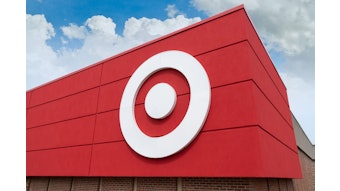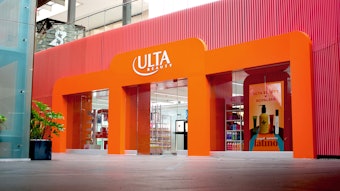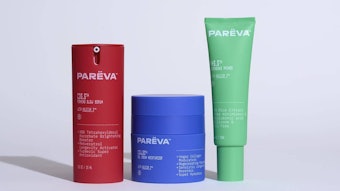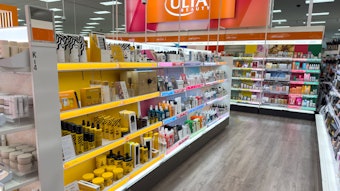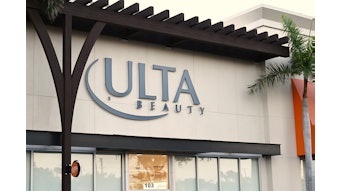Scientific breakthroughs and a consumer obsession with health and vitality continue to keep the wellness industry busy. Consumers no longer look to spas for luxurious indulgence, but for antiaging treatments, stress relief and better health. With developments in medical esthetics, spas have carved quite a niche when it comes to experiencing total wellness. The medical industry recognizes the need for relaxation and in including spa and wellness services in new developments as well.
“Technology is moving forward so fast, enabling us to achieve things that we never could have thought were possible 10 years ago,” says Hannelore Leavy, executive director, Medical Spa Association.
As technologies go mainstream in a high-touch industry, the future is in high-quality, active, cosmeceutical-type products and services. Savvy spa-goers are driving the push. Consumers are more aggressive about fending off aging and are doing it at a much younger age, often starting preventive treatment in their 20s.
“This is one of the greatest opportunities in the market, as we have a broader base of consumers,” says Niquette Hunt, vice president of OTC products, Revance Therapeutics. “It’s not just ‘ladies who lunch’ anymore; everyone is participating actively, no matter their income or age.”
Medical Spa Boom
With medical spas providing clients with diagnosis and treatment for traditional, complementary and alternative health practices, and treatments under the supervision of a licensed health care professional, spas are taking a more serious turn. In a little more than a decade, the U.S. medical spa market alone has grown from zero to $1 billion.
Considered one of the first medi-spas that helped coin the phrase, the Juva Skin & Laser Center in New York offers state-of-the-art, specialized procedures in laser and cosmetic surgery, esthetic skin care and general dermatology. Surgical procedures can incorporate medical spa treatments that are custom-designed to improve the outcome. This fusion of esthetic and medical services is quickly becoming a common approach to skin care.
Director Bruce Katz, MD, believes medical technology is the primary opportunity for growth. “Medical spas will continue to outpace the rest of the spa industry,” he says. “Medical technology and innovation gives us more effective treatments for better results.”
In addition, physicians are increasingly interested in providing elective wellness treatments that are sought by ever-growing numbers of men and women. Erik Goldman co-founded Holistic Primary Care in 2000 and its trade show counterpart, Transforming Primary Care, based on the observation that conventionally trained physicians were poorly prepared to address their patients’ surging interests in wellness therapies. Goldman is striving to build an information bridge between alternative health care and mainstream medicine. Whether his readers provide natural approaches themselves or offer referrals, the consumer push for complementary and alternative medicine requires physicians to be knowledgeable so they can provide patients with useful choices.
Transitional physicians who are thinking about adding wellness care to their practices are taking their cues from patients. “It is clear that the holistic and spa movements are growing,” says Goldman. “People are dissatisfied with insurance-dominated, pharmaceutical-based medicine.”
The Internet is a primary driver; the free exchange of information allows people to take control of their care. However, people need to be more discerning about what they read online, and companies need to be ethical about what they are posting. It is increasingly difficult for consumers to distinguish marketing hype from real health information. In turn, physicians have been forced by these “empowered patients” back into the original role of teacher. “Unfortunately, this is happening at a time when insurance pressures are requiring doctors to spend less time with each patient,” says Goldman. Concierge medicine, such as market leader MDVIP (www.mdvip.com), and fee-for-service options are allowing physicians to see fewer patients while providing more intensive, personal care.
Changing Focus
The medical spa boom also has provided physicians with opportunities to change focus from treating disease to providing preventive health and wellness. Physicians lend credibility to the spa environment, taking it out of the realm of vanity to a site for medical care. Some physicians feel that their colleagues are selling themselves out, but others feel they are finally able to get serious about health care—finding the true value in long-term self-care. “Doctors are being forced to reckon with things they used to consider out of their scope,” says Goldman. “Now, a new crop of doctors who are culturally inclined toward alternative ideas are looking at integrated medicine more seriously.”
Out of a desire to do more for her patients, Grace Keenan, MD, founder of Nova Medical, expanded her Ashburn, Virginia-based internal medicine practice by adding a spa. Now expanded to four locations, Nova and The Medical Spa at Nova feature a tremendous amount of integration so she can offer clients a range of services—not because alternative therapies always are the best treatments, but because they are sometimes just what the patient needs.
“Health care is overly reliant on prescription drugs and surgeries,” says Keenan. “But if it’s going to help a person, doesn’t a warm soak with therapeutic essential oil, instead of popping an anxiety pill, just make sense?” Keenan has had great success in motivating people to help themselves and be proactive in their wellness. “We need to stop and think about what we are doing. We need to provide the best care possible, whether it’s working with a dietitian, providing acupuncture, massage therapy, or prescribing medicine,” she says.
Working Together
Hospitals are also starting to provide alternative therapies to their patients. Natural Resources Spa Consulting, for example, is working with the Henry Ford Hospital system in Detroit, to provide fully integrated wellness services.
The spa and medical communities can and should work together. Both must become knowledgeable about the other and use that knowledge to strengthen their industries. “To address the human and the condition in its entirety, that is where the future is,” says Kim Matheson, president and owner, Natural Resources.
Healthy skepticism is good for both industries. “You don’t have to look very far on either side to see treatment that makes sense and treatment that’s questionable,” says Holistic’s Goldman. Both markets need to be more discerning about what they are doing and work together for the consumer good. “Instead of playing on people’s insecurities, allow people to be healthy and enjoy their lives, making good use of medical and therapeutic resources,” he adds.
New Revenue
Physicians also are looking for new revenue streams—ways to bring more money into their practices—particularly in primary care, because they are being hit hard by insurance providers. For brands looking to fill a niche market in a physician’s office or medical spa, ethical and manufacturing standards are a must. “It takes a high level of trust for a doctor to advocate something to their patients, no matter the setting,” says Goldman. “Take the responsibility seriously, because, while revenue is important, they are not in it to make a quick buck.”
JSJ Pharmaceuticals is a growing specialty pharmaceutical company based on the development and commercialization of prescriptive products to meet the diverse needs of patients suffering from a wide range of dermatological conditions. In February 2008, the company introduced its new esthetic division, Vitivia. “With the continued growth of medically based aesthetics, Vitivia will be an important growth factor for the future of JSJ Pharmaceuticals,” says JSJ’s COO, Jonathan Alba. The first of Vitivia’s science-based, results-oriented products, available through physicians’ offices in the U.S., is Pro: Vitamin. Topical vitamins have long been recognized as important tools in the antiaging process, but stability has been an issue with long lists of preservative agents being the only solution. Pro: Vitamin’s individual biodegradable unit doses have not been exposed to light or air to keep the concentration pure and stable.
Revance Therapeutics is a biopharmaceutical company that is pioneering transdermal delivery of biologically active macromolecules and is best known for its flagship product, currently in clinical development—a gel-based, needle-free, topically delivered botulinum neurotoxin type A. The company’s Relastin line also mimics the impact of physician office treatments such as lasers and injectables. Skin Revitalizer and Eye Silk feature a zinc firming complex that stimulates the production of new, functional elastin fibers. Originally founded by two cardiovascular physicians, Relastin is available through physicians and medical spas as well as high-end online retailers. Shortly after Eye Silk launched, it received high-profile endorsements from dermatologists and beauty publications, such as Allure magazine, which gave it the “Best in Beauty” award for the best anti-wrinkle eye cream in 2007.
Spa Market Opportunities
Most spas carry a natural- or marine-based line as well as one that’s more results-oriented, whether it’s cosmeceuticals or a line to address problematic skin. In addition, they often will have a specialty line, a branded ayurvedic or an aromatherapy line. The industry also is really looking for products that dovetail with intergenerational wellness treatments—specifically light therapy, massage and acupuncture. The spa is definitely an attractive place to feature products, but brands will find the spa market challenging because it is so saturated. “You have to be very creative,” says the Medical Spa Association’s Leavy. “The key is to define who you are.”
Cutting-edge ingredients may not be enough. It’s important to put science behind your line to set it apart from the rest. Will it get results? Not only does it matter what’s in your bottle, but also where the ingredients come from and how they’ll affect the environment. Niche products are key, too. Why should a spa or medical office carry your line? They want to know what makes you different.
“Don’t be shy,” adds Matheson. “But be honest.” Marketers must represent themselves and communicate their message accurately. Consumers are savvy, but they are also unforgiving, and word today travels fast and furious.
Beauty Paradox
Environmental awareness is indeed at the forefront of today’s marketplace, and consumers are buying natural, organic and recyclable products, especially in the spa. The spa community’s commitment to the environment is not a passing phase. On-site organic gardens; products made from locally grown fruits, vegetables, herbs and plants; mineral makeup; and green building tactics are just a few of the ways that spa professionals are showing their commitment to the earth. To set themselves apart, spas also are evoking regional traditions and landscapes, such as blueberry body scrubs in Maine and papaya and honey lime wraps in Mexico. Indigenous treatments, eco-friendly products and at-home spa trends suggest a bright future for ingredients that deliver.
Yet, there is a “beauty paradox” taking place. Women want what’s best for their planet … and for their skin. “The beauty paradox is exemplified by women who use only organic products but drive an SUV,” says Nancy Trent, president, Trent & Company. “There’s a lack of consistency, but it is a beautiful consistency for the modern world.”
EmerginC is one brand that uses cutting-edge technology as naturally and as safely as possible. The high-end cosmeceutical line has been repackaged in environmentally conscious paper and vegetable-based ink, and the reformulated concentrations contain no synthetic fragrances or dyes and new powerful botanical ingredients to create a naturally potent line—now featuring a “superior” form of vitamin C— that is better for skin.
EmerginC’s new eco-chic concept addresses the need for technologically advanced skin care with visible results, while allowing consumers to make choices that are healthy for their bodies and the environment. “As the consumer demand for organic products rises, today’s beauty industry retains a reverence for going green,” says Ian Lirenman, founder. It is an ongoing process for brands such as EmerginC. Lirenman, for one, is always on the lookout for new, more natural options, such as biodegradable plastic for the tubes.
It’s the right thing to do, and it’s good business. “Spas want to know what we are doing environmentally,” says Lirenman. “As the industry is moving in this direction, we want to be a company that takes action.”
Biological Compatibility
In an effort to balance the greening of formulations with results-oriented spa care, “biological compatibility” is the new buzzword. “It’s not always about whether something is natural, but whether the body can use it,” says Trent.
These high-tech product formulations are the result of research—how effective the products will be for at-home use and how they will interact with popular spa treatments, such as intense pulsed light, laser treatments, LED, microdermabrasion and facials.
Bernard Gramlich is a pharmacist developing his own pharmaceutical-grade acne line based on niacinamid, a B vitamin. “From the pharmacist’s standpoint, the most important things are safety and efficacy,” says Gramlich. He developed the line during his wife’s pregnancy when nothing she tried commercially worked on her hormone-induced acne. “I knew if it was safe in pregnancy, it would be safe for anyone,” he says. “I want to fill a need in the marketplace for a high-quality acne treatment that’s available to the less affluent consumer.” SK1N by Dr. Gram should be available by early 2009.
Another line, Pamela Hill Skin Care, is based on peptides that can affect the skin without irritation or peeling, a concern for clients undergoing professional treatment. “Natural products are plant-based and can be effective, but are not as predictable,” says founder Pam Hill. “Your body has to be able to take in and use the ingredients for them to work.” Hill’s spa line is also completely customizable and offers different home care regimens and specialty treatment products to ensure each skin care program is suitable for the individual.
Innovation is important in bringing increased or specialized benefits to products, and the industry is rewarded because women will buy more products to meet their needs. Because every person has different skin, needs and lifestyles, the industry is pleased to see a movement toward customizing. “You can’t be one size fits all anymore,” agreed Natural Resource’s Matheson. “You have to address the individual.”
As products are becoming more specialized, dermatologists say there is a lot of unmet need in neck, hands and above the lip areas. These areas are difficult to treat, even for professionals.
Going Home
Opportunities exist in home care, as well. “People like to be empowered with the tools to help themselves,” says Johnna Allen, marketing and sales director for Pharos Life Corporation, which launched the Tända light-therapy device for home use in September 2007. It’s a physician-directed product in 27 U.S. states and is available over-the-counter in Canada, but the company also is planning launches in Italy and France this year.
Used alone or in conjunction with skin care, dermatological devices provide consumers with antiaging, acne and hair removal solutions at home. Tools include microdermabrasion, microcurrents, bio-photo stimulation, LED, thermal energy, electrical stimulation, muscle stimulation, lasers and electrolysis treatment.
As consumers embrace the solutions that technology offers, products that work in conjunction with or complement these devices at home will have a broad range of market opportunities.
Better Equipped
Whether at home, at the spa or in the physician’s office, it is important to provide effective results that satisfy the consumer. “Clients are much more sophisticated, and the industry has to keep up,” says Matheson. Time-pressed consumers are looking for treatments and results that are able to meet increasingly high standards. With technologically evolving equipment and products becoming easier to use and more readily available, we are better equipped to meet this demand.



